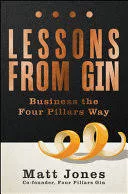Stability, growth forecasted for wine industry
Research shows demographic possibilities
Based on a detailed analysis of past recoveries, Chicago-based SymphonyIRI predicts several years of 3 percent volume growth once consumer expectations have stabilized.
Current market dynamics continue to weigh heavily on shoppers. Wine consumers now express contradictory sentiments regarding economic expectations. Although they communicate anxiety about the state of the economy, they do not seem to be altering their purchase patterns.
In addition, while wine consumers believe the economy may worsen, they also believe their personal economic situations will improve. Wine industry decision-makers can gain a competitive advantage by marketing to wine shoppers’ future expectations rather than current concerns.
Performance indicators
The wine industry is not yet a mature market when compared to that of spirits and beer. Mature markets are typically much more closely tied to economic conditions; evolving markets can experience fast growth even during economic downturns. During the 2008-2009 recession, volume growth declined only 0.9 percent and 0.8 percent, respectively. As the economy recovered in 2010, growth picked up to 1.7 percent.
To evaluate the prospects of the wine industry for the future, SymphonyIRI divided wine-drinking consumers into five consumer profiles. Each group exhibits different attitudes and characteristics regarding wine consumption. The groups are as follows:
Daily Musts represent 16.4 percent of wine drinkers, but spend an outsized 49.3 percent of all wine sales. Their median age is 61 and median annual income is approximately $62,000. Daily Musts are the heaviest wine consumers in this segmentation.
Variety Seekers differ significantly from their Daily Must brethren. They represent 14.4 percent of all wine drinkers with a spending share of 34 percent and a median age of 50. Annual income averages $100,000. They view higher price as a sign of higher quality.
Personal Image wine consumers represent 14.1 percent of the wine market, approximately the same as Variety Seekers. However, their spending is significantly lower at just 3.1 percent of the total wine market. At 34 years old on average, their median income is $62,000 a year.
Savvy Buyers include 2.6 percent of wine consumers and account for 9.7 percent of spending. With an average income of $80,000 and a median age of 48, this group enjoys trying a variety of wines.
Occasional Consumers account for the largest number of wine consumers (34.5 percent) but represent just 4 percent of total wine sales. Their median age is 55, and this group reports an average disposable income of $63,000.
Even with periodic market disruptions, SymphonyIRI predicts wine industry revenue growth in the range of 3.5 percent each year. This forecast is based on performance in non-recession years where wine volumes have averaged 3.5 percent growth annually. Also factored into this prediction is the anticipated growth of the 65-plus age group, a significant portion of whom fall into the Daily Musts segment, which has a median age of 61. To take advantage of today’s trends, U.S. wine industry decision-makers should do the following:
• Market to future expectations, which will contribute to increased consumption opportunities. Marketers must tailor their messages to each consumer profile and micro-segments within each profile.
• Target moderate drinkers/young consumers as these drinkers tend to be more image conscious. For several consumer profiles, drinking is aspirational, with consumers believing that what they drink reflects directly on their personal image.
• Convince moderate drinkers to move upscale by demonstrating the attractiveness of traditions, such as including wine with meals, to increase drinking occasions.
• Avoid low-probability market segments, such as Savvy Buyers. This group has indicated they do not plan to expand consumption significantly.
• Develop strategies to up-level consumers to more attractive segments by creating micro-segments within each consumer profile and carefully studying behaviors for new opportunities.
• Understand the influencers that affect buying decisions of both brands and channels. This includes the impact of income shifts, both upward and downward, and other personal considerations such as marital status as well as the number and life stage of children. BI
Looking for a reprint of this article?
From high-res PDFs to custom plaques, order your copy today!





